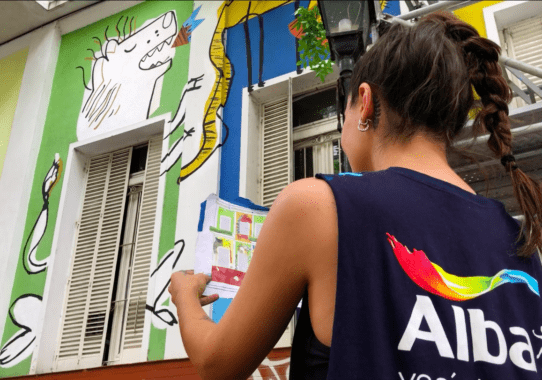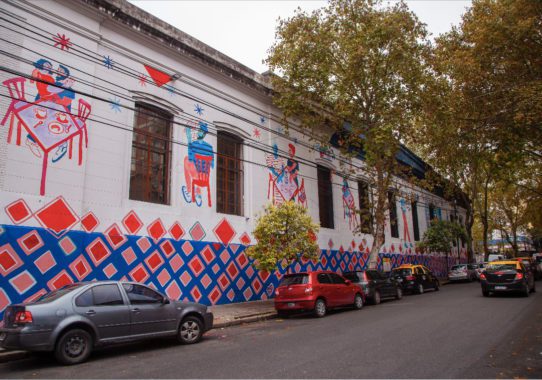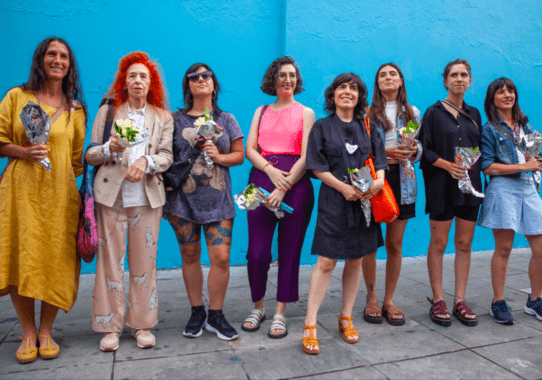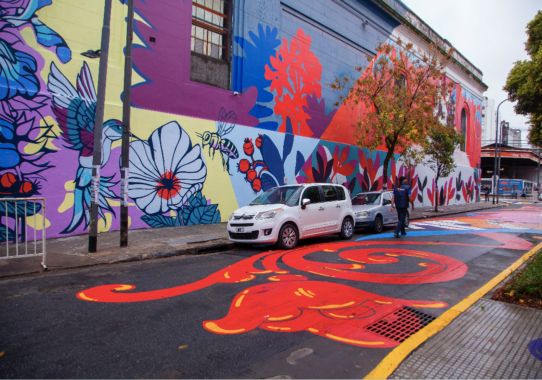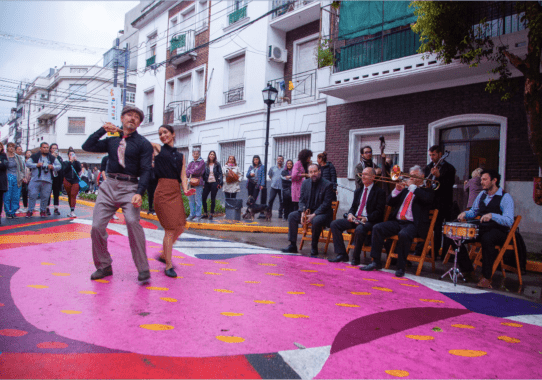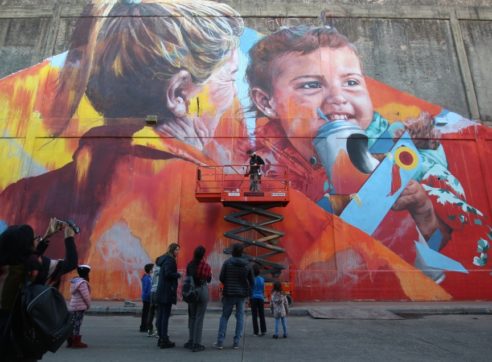
Vení al Color captures the spirit of the Abasto neighborhood in Buenos Aires, Argentina
As part of Vení al Color (Let’s Colour), our brand Alba, together with the Ministry of Culture of the City of Buenos Aires, brought color to Barrio del Abasto. They implemented an urban transformation project in the Abasto cultural district of Buenos Aires, Argentina, consisting of a series of public art interventions carried out in two stages.
Argentina, Buenos AiresAs part of Vení al Color (Let’s Colour), our brand Alba, together with the Ministry of Culture of the City of Buenos Aires, brought color to Barrio del Abasto. They implemented an urban transformation project in the Abasto cultural district of Buenos Aires, Argentina, consisting of a series of public art interventions carried out in two stages.
Culture as a transformative force
This project was born in Abasto Barrio Cultural (Abasto Cultural Neighborhood), with the aim of improving the quality of life in this neighborhood, understanding culture and art as driving forces for the transformation of public spaces, and adding value to the identity of the area by promoting the network of artists and strengthening the social fabric.
The initiative for the project arose from the collaborative work of various neighborhood representatives, who facilitated research based on the proposals made by neighbors, institutions, and cultural spaces of Abasto.
To support this venture, Let’s Colour joined forces with the Ministry of Culture of Buenos Aires, the Ministry of Public Space and Urban Hygiene, the Ministry of Urban Development, and Communes 3 and 5, among others. The project was implemented in two phases, breathing in a new life to the neighborhood.
Women artists capture the spirit of Abasto
The first project phase included the creation of a corridor that enhanced the artistic and cultural circuit of Abasto and was inaugurated by the Ministry of Culture of Buenos Aires in December 2022. Alba donated more than 500 liters of paint to help create five murals of 1,500 square meters, all made by female street artists, that reflect the identity of Abasto and promote this neighborhood as a pole of independent culture. This stage also included activities and workshops that strengthened the collective effort to develop the neighborhood identity.
Abasto was revived with colorful artworks that depict the spirit of local culture. Silvia Dotta, a founding member of the Association of Fileteadores, and Mabel Vicentef, a renowned female mural artist, carried out a mural on the wall of the Coto supermarket. At the same time, they met with young people from the neighborhood who participated in the Puerta 18 workshops. Isol Misenta worked on the façade of School No. 6 Gral. Martín Rodríguez, while students at the school helped develop the sketch for the mural.
Another team of artists decided to give a fresh look to the Vital supermarket. María Luque designed the mural on the façade, capturing the representative characters from the neighborhood’s past. Delia Cancela created the mural on the supermarket wall, where she decided to republish one of her classic works, and Caro Diatomea and Caro Cuore oversaw the mural on the Cotax building (Taxi Cooperative). The mural designs from Cancela, Misenta, and Luque were brought to life by the artist duo Carolina Jáuregui and Suyay Brillaud.
The largest floor mural
The second phase of the Let’s Colour project took place from April 19 to May 6, 2023. At this stage, different streets and spaces in the Agüero corridor were enhanced by works of art made by female artists with prolific careers in collaboration with the residents of the area. In total 2,000 liters of Alba paint was donated.
A more than six hundred meters long mural called Universo Abasto was created on the pavement of Agüero Street, becoming the largest floor mural in the city and adding vivid colors to the area. The design combined the illustrations of Camila Calderón and ‘filete porteño’ decorative elements by Silvia Dotta, which pay homage to a traditional pictorial art form officially recognized as an intangible heritage of humanity by UNESCO. The urban artist Caro Diatomea contributed by painting another mural on Agüero Street, inspired by the nature of the neighborhood. In addition, the environmental ecosystem of the area was strengthened by widening the sidewalks of Agüero Street and creating a green street with plantations of native flora.
Minister of Culture of the City, Enrique Avogadro, explained: “Abasto has a very distinct identity that makes it a place of reference. It is known for its vast and rich cultural offer. That is why we continue to promote this pole of art and culture from a continuous link with the referents of the area, to whom we provide tools so that they can conduct their proposals. We also move forward with projects to improve public space and connect Abasto’s cultural offerings, understanding culture as an engine of development and integration. The commitment of AkzoNobel and Alba is fantastic!”
Making spaces more enjoyable
The end of the project was celebrated with the Fiesta Abasto Barrio Cultural. The free open-air event offered music, theater, dance, and workshops, and was the official inauguration of the Biocultural Corridor with its new works.
Apart from highlighting Abasto’s cultural identity through art, this initiative has succeeded in increasing green spaces and improving accessibility and safety in the area, creating a more enjoyable public space for both the local population and tourists.
Find out more about Alba.
